Name Agostino Brunias | ||
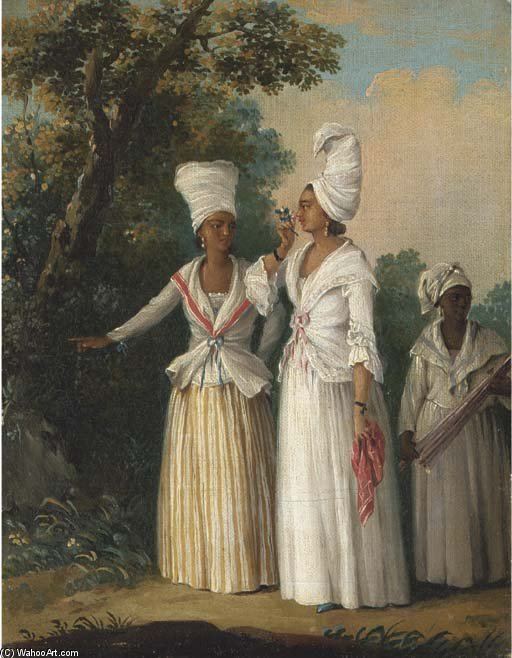 | ||
Artwork Free Women of Color with their Children and Servants in a Landscape | ||
Agostino brunias paintings
Agostino Brunias (c. 1730 – April 2, 1796) was a London-based Italian painter from Rome. Strongly associated with West Indian art, he left England at the height of his career to chronicle Dominica and the neighboring islands of the West Indies. Painted in the tradition of verite ethnographique, his art was as escapist as it was romantic.
Contents
- Agostino brunias paintings
- A Roman Artist in the West Indies
- Early years
- Career
- Style
- Personal life
- References
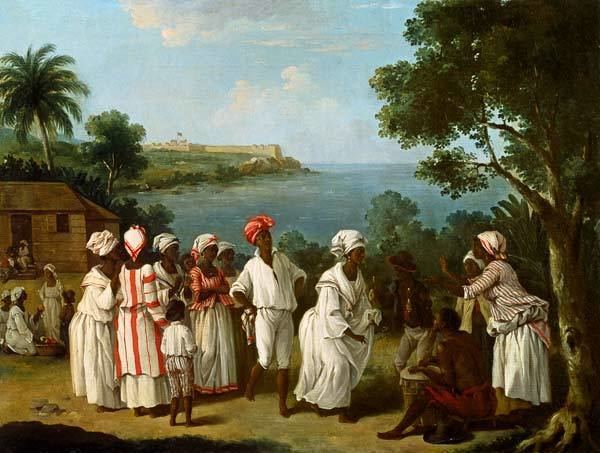
A Roman Artist in the West Indies
Early years
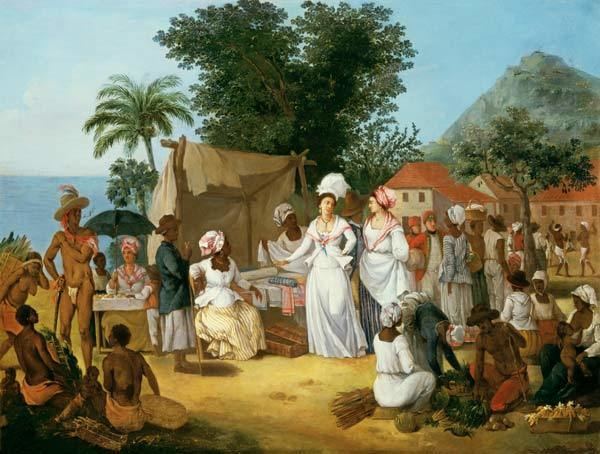
Brunias was born in Rome c. 1730; the exact date is uncertain. His first name has been spelled in various ways including Abraham, Alexander, August, or Austin, while his surname has been recorded as Brunais and Brunyas. Brunias was a student at the Accademia di San Luca, Rome, where he won Third Prize in the Second Class for painting in 1754. An early oil painting of his was exhibited in Rome two years earlier.
Career
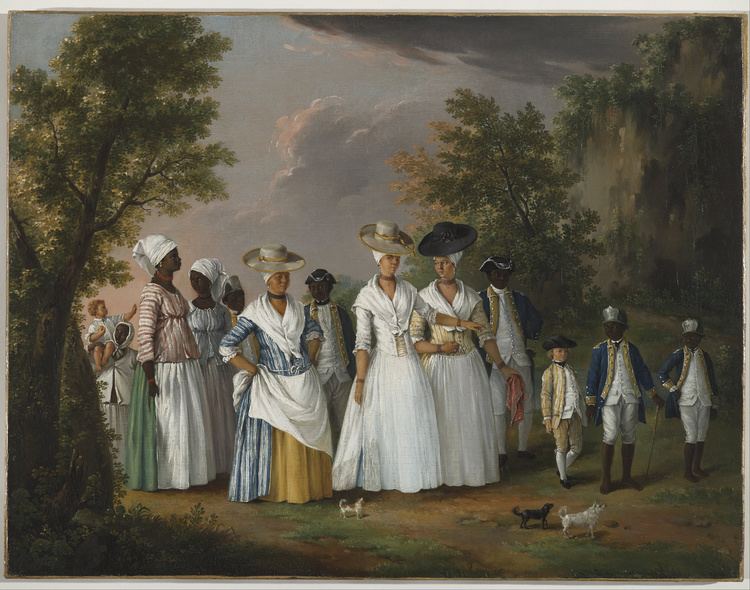
After Brunais met the Scottish architect Robert Adam, who was on a Grand Tour of Europe, he studied the "magnificent ruins of Italy" between 1756 and 1758. He became employed as a draughtsman by Adam, joining him in England in 1758, and painted many of Adam’s architecturally elegant buildings in England. Adam, praising his works, called Brunias a "bred painter". His paintings of murals and paintings covered the interior walls of many English stately homes. By 1762, Brunias resided in Broad Street, Carnaby Market, London. In 1763 and 1764, he exhibited at the Free Society of Artists in London.
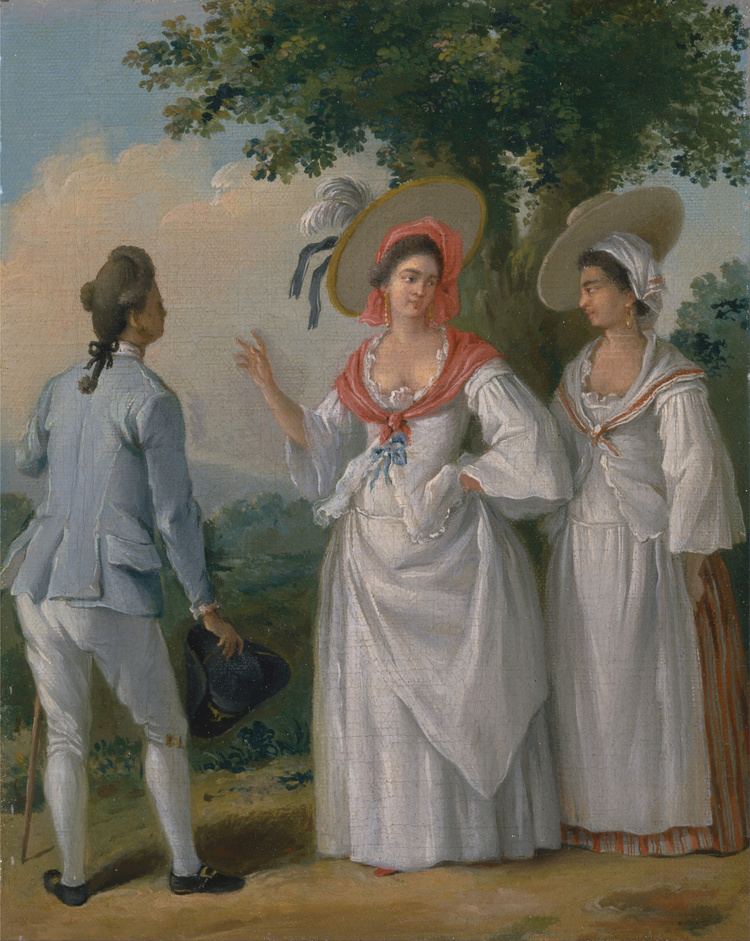
In 1770, he left London at the height of his career. He traveled with Sir William Young, 1st Baronet, the first British Governor of Dominica, then one of Britain's newest colonies in the Lesser Antilles, and settled in Roseau. Brunias submitted two of his drawings in that year to the Society of Artists' exhibition from the West Indies. Young had hired him as his personal painter and Brunias accompanied him on his travels in the Lesser Antilles.
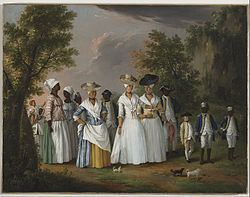
He was also hired by wealthy British estate owners, mainly to paint people, especially the mulatto, the mixture of European, African and Creole races. His paintings of Dominica, St. Vincent, St. Kitts, and Barbados provide a valuable insight into life on these islands during the colonial period. One of his works, Free Women of Color with their Children and Servants in a Landscape, (c. 1764–96), an oil painting on canvas, depicts colonial women of color as privileged and prosperous, and is now in the Brooklyn Museum. It depicts the influence of a diverse European, Caribbean, and African cultures prevalent in the 18th century Caribbean.
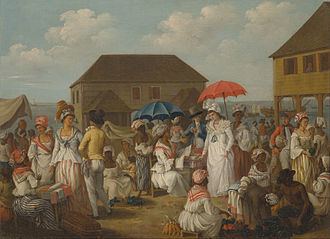
Toussaint Louverture liberator of Haiti and one of Brunias' supporters, wore eighteen buttons on his waistcoat decorated with reproductions of Brunias' paintings. But in the British colonial society on St. Vincent and the other ceded islands, Brunias was an outsider; he was neither Englishman nor Scotsman, and as a Roman Catholic did not belong to the established Church of England. In addition, his status as a draughtsman placed him on a low social level in terms of occupation.
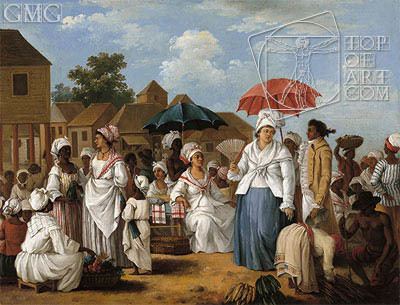
After returning to England in 1773, Brunias visited the European continent; he exhibited three paintings of West Indian scenes at the Royal Academy. In the late 1770s, three paintings were shown at the Royal Academy; these paintings were used to decorate the breakfast room at Kedleston Hall, and are now exhibited at the Victoria and Albert Museum. He followed this accomplishment by publishing a series of six of his West Indian paintings. At Stowe House he created wall paintings of "Caribbean aborigines" in its Ante Library. After these paintings were published in 1779 and 1780, Brunias oversaw engraved editions.
Style
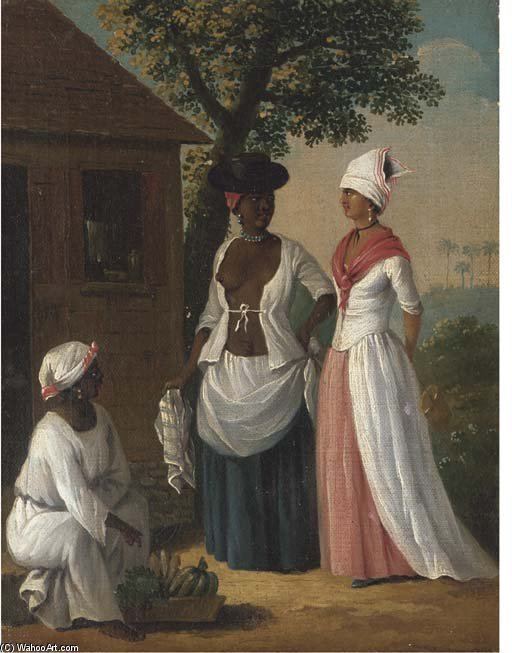
Although Brunias was initially commissioned to depict upper-class plantation life, his works assumed what was considered to be a subversive political role in the Caribbean, endorsing a free, anti-slavery society, and exposing the artificiality of racial hierarchies in the West Indies. He was particularly adept at painting Negro festivals, dances, markets, and other related cultural traditions and producing paintings showing interaction between the natives and the wealthy colonial settlers. Considered to be in the tradition of verité ethnographique, his art was as escapist as it was romantic.
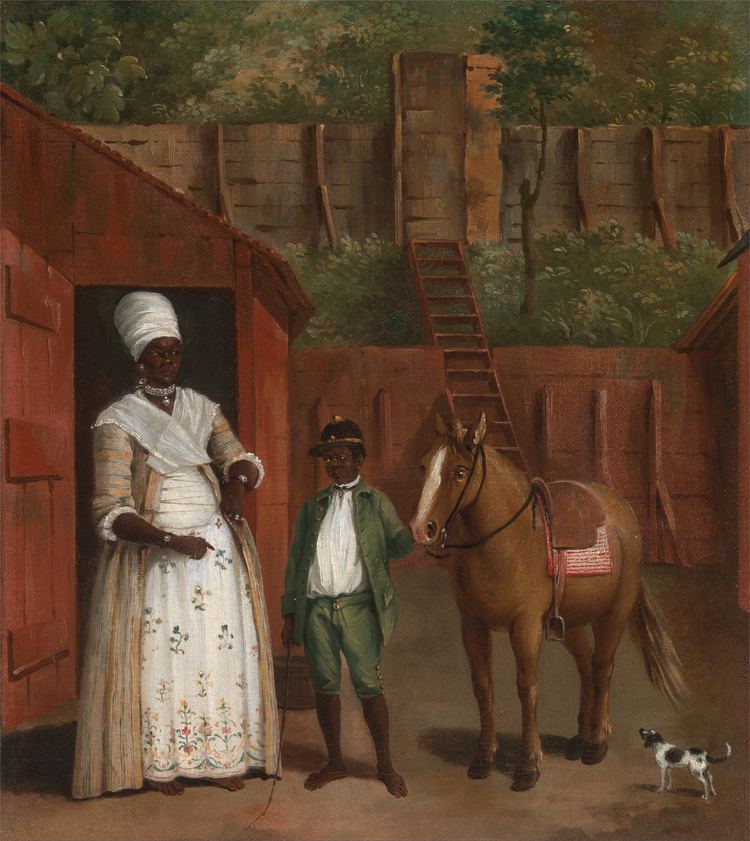
A prolific artist, Brunias' collected works show him to be predominantly a figure painter who concentrated on the new culture of the mulatto in the West Indies by creating romanticized images depicting communities of color that obscured the realities of colonial domination and plantation slavery.
Personal life
Brunias primarily resided in Dominica. He was also known to have lived in St. Vincent, and he spent time on Barbados, Grenada, St. Kitts, and Tobago. Mention is made that he sired a family while in Dominica, where he died on April 2, 1796, and was buried in the Catholic cemetery on the site of Roseau Cathedral.
Engravings of his designs were published posthumously in England and France in 1804 and 1810. Harvard University's Fogg Museum, Yale Center for British Art and Tate, London own examples of his works.
